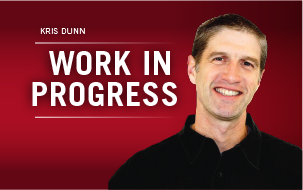It’s tempting to focus on the naysayer. It’s easy to give those loud voices of dissent all our attention. It’s not our fault.
We evolved to be somewhat anxious and pessimistic since hedging our bets and lowering our risks kept our ancestors safe. We focus on the loud voices of dissent because they might be right, and heeding their warnings might avert disaster. But sometimes the naysayers are simply afraid, and not only is there no significant danger in the valley beyond, its abundance could sustain us for generations to come.
When it comes to leading diversity and inclusion efforts in an organization, there are three major pitfalls in the way D&I champions treat D&I naysayers.
- Allowing efforts to be distracted or derailed by the naysayers. Change theorists have found about 14 percent of people are “early adopters” who immediately jump on board with a new idea, while up to 15 percent resist. D&I changemakers who focus most of their attention on converting the small minority of D&I naysayers allow early adopters to languish with no direction for their crusading energy. Meanwhile, the undecided or neutral majority stays neutral — or worse, begins to be swayed by the naysayers. Either way, precious time and opportunities are lost.
- Ignoring the naysayers’ voices completely. Depending on who the naysayers are and what they’re saying, ignoring their voices completely can stall or destroy progress. When I was the internal D&I changemaker in a former organization, I made a critical error by trying to minimize and circumvent a naysayer who also happened to be the chief human resources officer. While his political influence was waning, and that of my C-suite boss was on the rise, the CHRO still had the ear of the CEO, and he was the ultimate decision maker regarding personnel policies and the training and leadership development department. If I had been more strategic in my relationship building and more patient with the pace of power shifts in my organization, we could have gained traction more quickly and I could have increased my credibility and influence more easily.
- Dismissing or shutting down naysayers during trainings. An unskilled facilitator may minimize the questions or opinions of a person pushing back on D&I concepts during training, communicating indirectly (sometimes directly) that their point of view is less important than others in the room. The facilitator may try to convince the naysayer to “get on board,” wasting precious time proselytizing to the D&I naysayer while neglecting the session objectives and ignoring other participants’ learning needs. Both tactics are ineffective because they are not inclusive behaviors and therefore lack integrity with D&I principles. The first is disrespectful to the naysayer; the second is disrespectful to the entire group. Both are unwise because D&I naysayers are often bright, caring people who raise valid concerns, or important fears that must be taken seriously and addressed to ensure the success of the initiative, especially if the naysayer is a major stakeholder!
To avoid these three pitfalls, implement the following best practices for easier, quicker D&I success:
- Harness the enthusiasm of the early adopters. Give formal and informal D&I champions something to do right away. Make sure these tasks are meaningful and aligned with broader strategic D&I goals so you don’t waste energy and lose momentum.
- Focus on converting the undecided middle. Harnessing the early adopters will do much of this work for you. In addition, determine what the barriers are for the undecided. Are they overworked? Tired of flavor-of-the-month initiatives, waiting to see if this one is for real? Unsure why the organization is launching a D&I initiative? Unsure what it has to do with their job? Invest in internal marketing and communication to ensure your messaging is simple, accurate, inspirational, aligned and addressing the barriers of the undecided. Tell people what to expect, why it matters, and how they can contribute. Also, give change time!
- Listen to, and involve, the D&I naysayers. This may be especially difficult for D&I changemakers if the naysayers represent a demographic or political affiliation the changemakers find difficult or threatening. But naysayers typically express their concerns because they care about the organization and want to make a difference, and inclusion includes everyone. Listen openly and with curiosity to their concerns — one-on-one, in training sessions, and in meetings. Role model inclusive leadership by checking your assumptions and seeking to understand. The naysayer may give you the gift of identifying a misperception that can be clarified, a valid concern that must be addressed, or a blind spot you missed. I’ve found that some naysayers become powerful allies once they’ve been heard, taken seriously and included in problem solving.
Leverage the skills and energy of your natural champions, focus most of your efforts on the undecided middle and don’t ignore the power of the D&I naysayer. Because while any change requires fired-up champions equipped with the proper tools, there are few with more zeal than the convert!
Susana Rinderle is a principal consultant with Korn Ferry, and a coach, speaker, author and diversity and inclusion expert. The postings on this website represent my own personal views and do not necessarily reflect the opinion of Korn Ferry International or any other organization with which I may be affiliated. Comment below or email editors@workforce.com.













